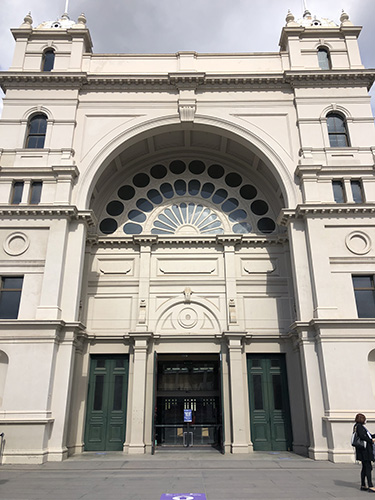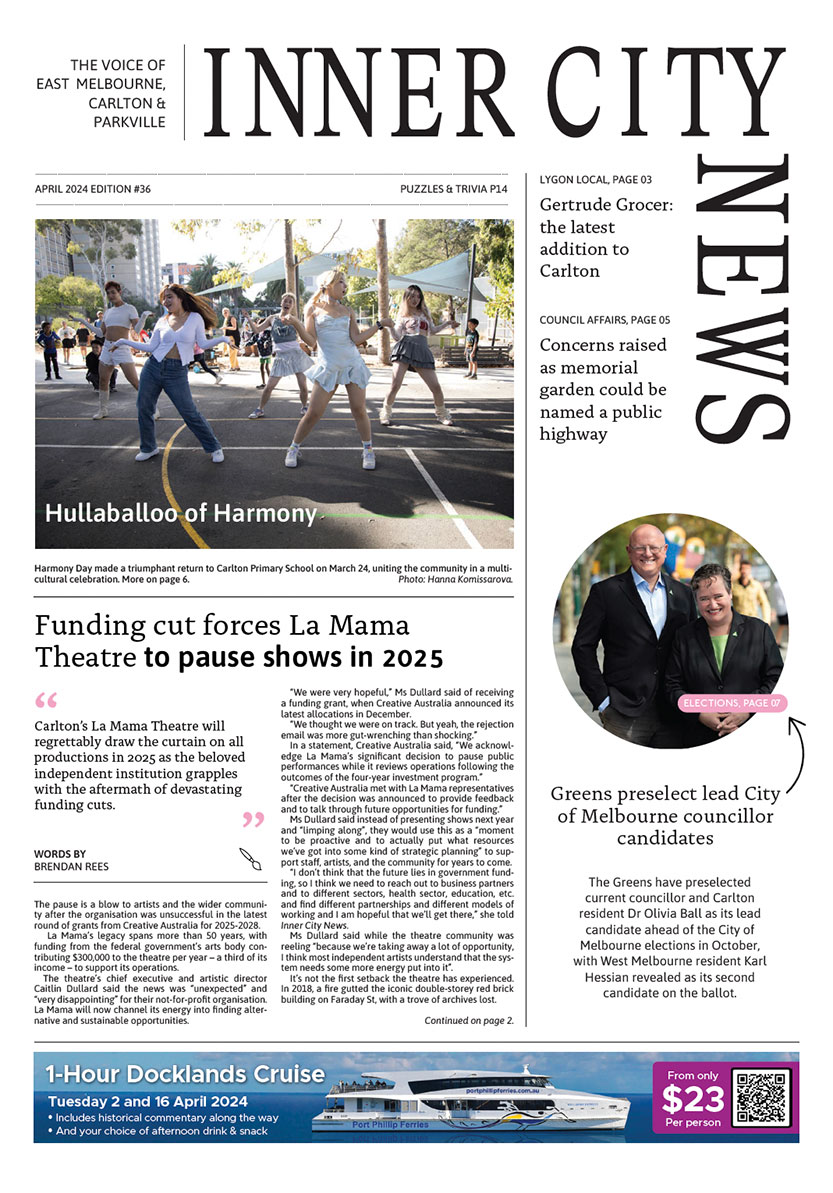Mass COVID vaccine rollout begins at Royal Exhibition Building
One of Melbourne’s biggest COVID vaccinations hubs, the Royal Exhibition Building, had a steady trickling of people when Inner City News visited in late April.
AstraZeneca vaccinations resumed on April 21 at the building for Victorians over 70, and for frontline workers, after a two week pause due to blood clot concerns.
Joan Hoogenraad, who had driven from St Andrews with her husband Nick to receive the vaccine, said it represented “hope and freedom”.
“I’m excited to get it done, I just called up this morning to book and it was a very easy process,” Ma Hoogenraad said.
“But I’m disappointed that I can’t get it at my home clinic in St Andrews as they said there would be a two- to 12-week wait and they were only getting 50 doses in at a time.”
Victoria University employee Matt Harvey was also checking in for the vaccine and said he was “feeling good” about getting the jab.
“My wife was getting the vaccine, so I thought I’d come with her and just walk up and get it,” Mr Harvey said.
“There’s lots of check-in questions but other than that it’s an easy process.”
The Royal Exhibition Building became a mass vaccination hub for public sector workers, including healthcare staff, police and paramedics in late March.
But when the Australian Technical Advisory Group on Immunisation (ATAGI) advised the Victorian Department of Health to pause the administration of first doses of the AstraZeneca vaccine to people under the age of 50 in April, there were mass cancellations.
The disruption meant frontline workers and all others eligible for the vaccine under phase 1A and 1B of the program including those with an underlying medical condition were turned away from the Carlton site.

Minister for Health Martin Foley said although the disruption had put a pause on vaccine targets, the rollout was back underway.
“Our medical experts’ recommendations obviously impacted the national rollout, but here in Victoria, we’ve worked around the clock to find solutions to get vaccines in people’s arms as quickly and safely as possible,” Mr Foley said.
“By April 21, our health professionals will have everything they need to administer AstraZeneca to eligible Victorians of all ages, and they will continue to do so to the highest standards of safety and quality.
“While this expansion provides more options for Victorians over the age of 70, it’s expected most people in this category will continue to receive it locally with their trusted GP – that’s something we’re pleased to encourage.”
The Royal Exhibition building is one of three of Victoria’s high-volume vaccination centres, alongside the Melbourne Convention and Exhibition Centre and the former Ford factory in Geelong.
This will be the second time the Exhibition Building has been used during a pandemic, as it was first used as a makeshift hospital in 1919, during the Spanish Flu pandemic.
With the three sites making up for the widespread shortages at GP clinics, the Victorian government says the state is on track to deliver a total of 300,000 vaccine doses by May 16.
On the day of the rollout at the Exhibition Building there was also a small group of protestors monitoring the site.
Lawyer and founder of the group Chase Truth Peter Little, who was liaising by the group via Facetime, said the Victorian government was “covering up” the adverse effects of the COVID vaccine.
“We have AusVaxSafety statistics that 25.4 per cent of people surveyed after they receive the AstraZeneca vaccine can’t work the next day due to illness,” Mr Little said.
“But as the Victorian government is no longer surveying Victorians after they receive the vaccine, what is happening is a widespread experiment on the Victorian population.”
The vaccine statistics Mr Little cited are from surveys conducted by legitimate agencies Vaxtracker and SmartVax.
However, the data states that vaccine symptoms are “mild and short-lived”, last under a day in the majority of cases, and “may be coincidental and due to other causes”.
The day off work is also in contrast to the 910 people in Australia and more than three million people worldwide who have died from COVID without the vaccine.
Currently, the vaccine is being manufactured at CSL’s Parkville site after the company received approval in March.
The Federal government initially had a target to have every adult in Australia vaccinated by October this year, however due to the slow rollout of imported doses the target is lagging behind.
At the time of publishing, around 1.6 million vaccine doses had been administered nationwide, well short of the four million dose goal originally set for March.
A Victorian Department of Health spokesperson said the team had worked hard to get the mass vaccination site up and running to make up for the shortfalls.
“Teams from St Vincent’s Hospital have worked hard to get this iconic site ready for high-volumes and it has vaccinated thousands of Victorians since it opened last month,” the spokesperson said •

Carlton language school championed by Ukrainian refugee





 Download the Latest Edition
Download the Latest Edition